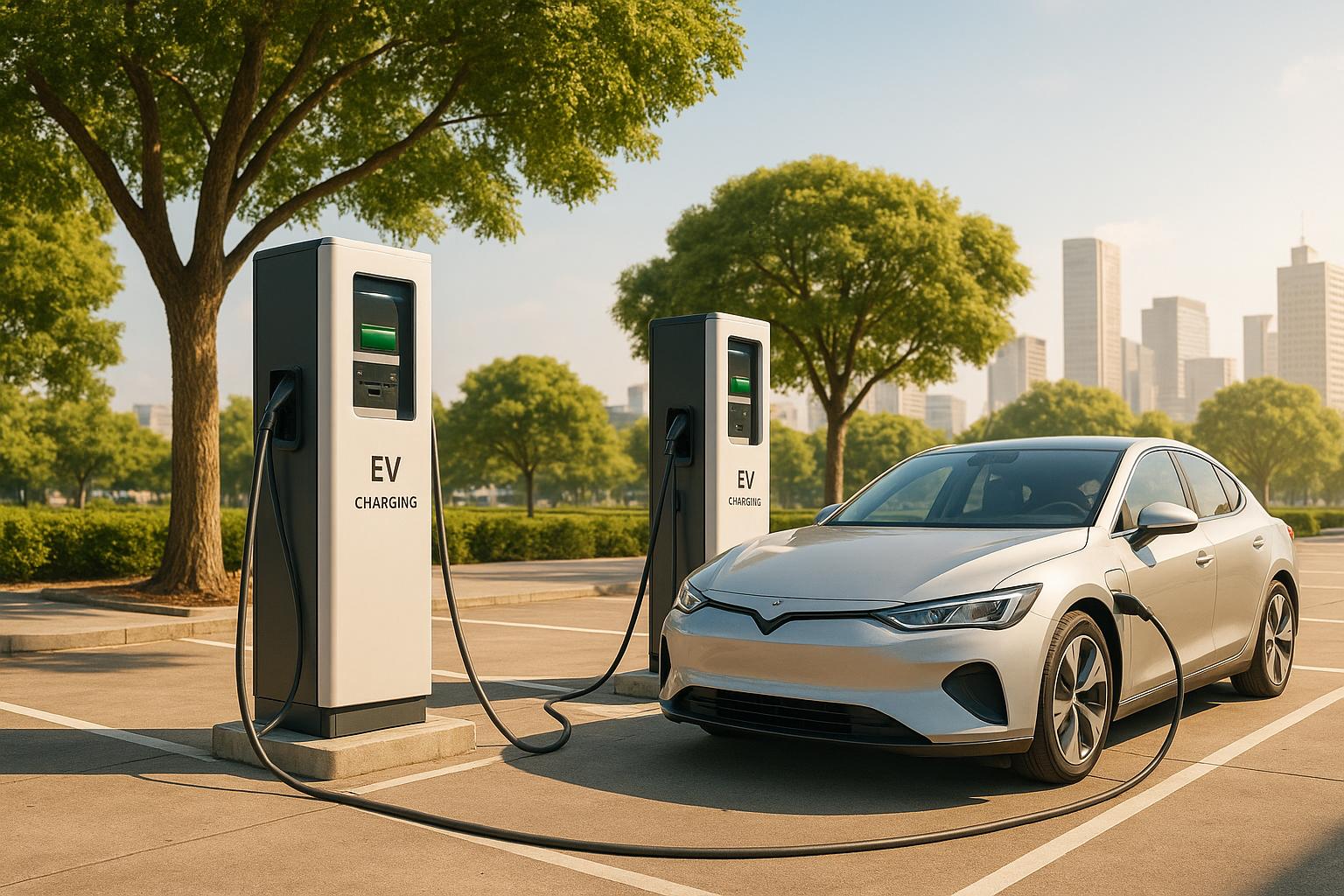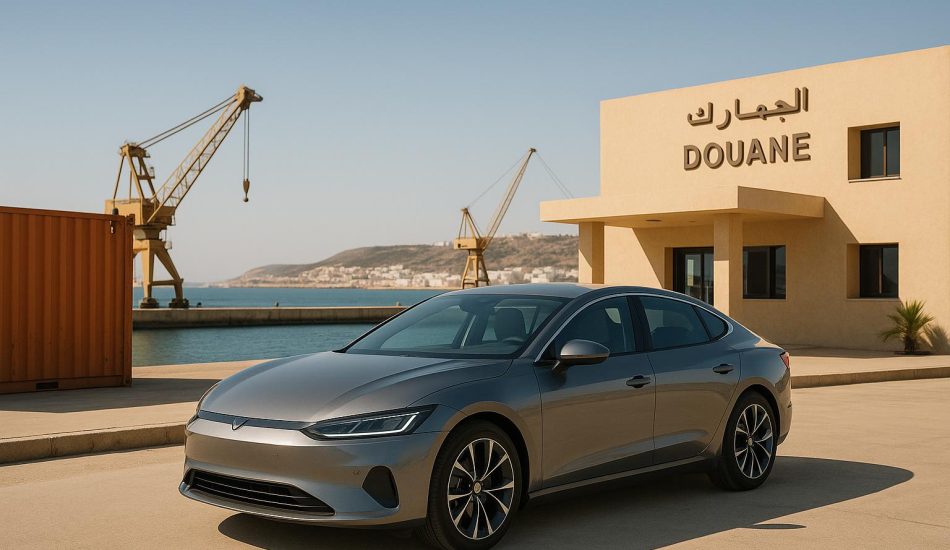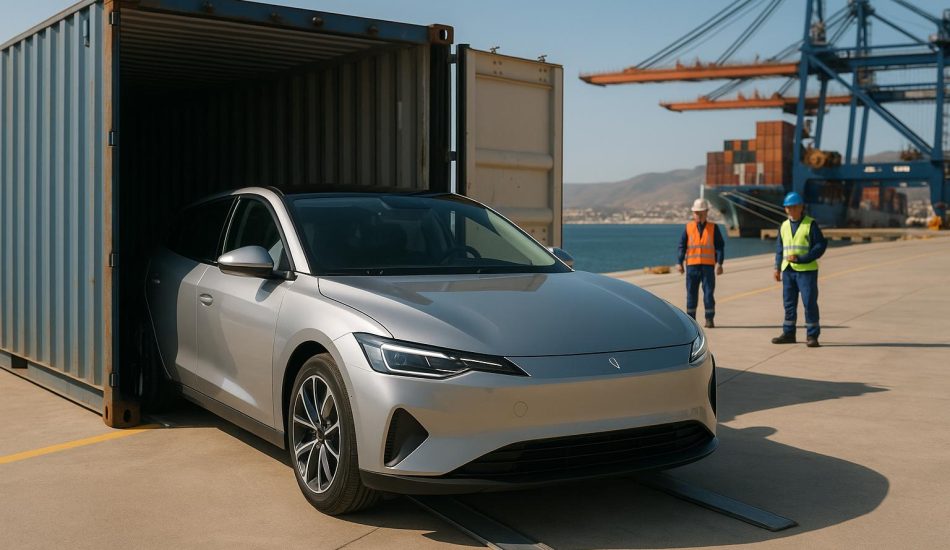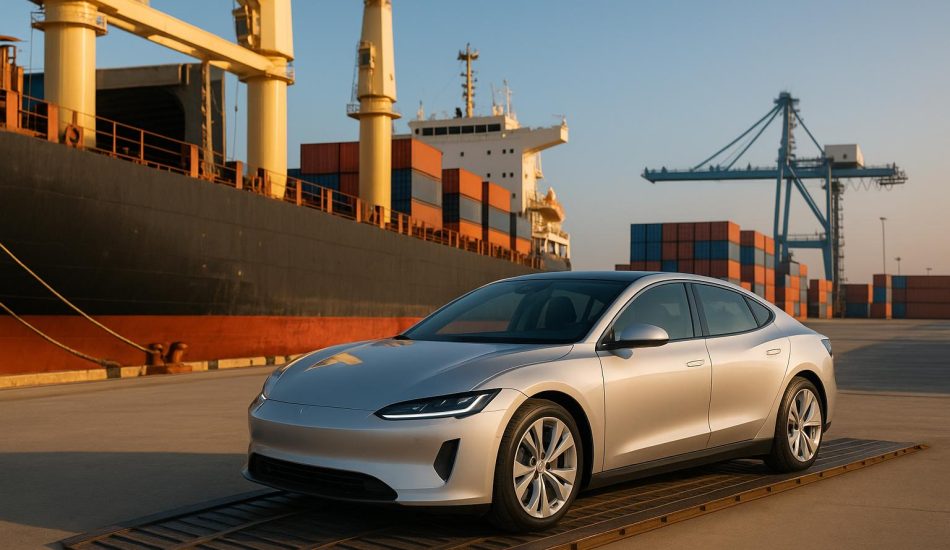
In 2025, EV charging costs in Africa vary widely due to factors like local electricity rates, infrastructure development, and government policies. Key trends include:
- Regional Differences: Urban areas with better infrastructure and renewable energy investments often have lower tariffs, while rural regions face higher costs.
- Dynamic Pricing Models: Seasonal and time-of-use (TOU) rates let EV owners save by charging during off-peak hours or low-demand seasons.
- Infrastructure Growth: Expanding charging networks are driving competition, lowering tariffs, and enabling longer trips with fast-charging stations.
- Government Policies: Tax breaks, subsidies, and pricing regulations aim to make EV charging more affordable and transparent.
- Home Charging: Many owners prefer private or home charging, especially when paired with solar panels for lower costs.
With platforms like EV24.africa providing clear pricing data, EV ownership is becoming more accessible across the continent.
This Nigerian EV Company is Reducing EV Costs with Free Charging & Competitive Prices
EV Charging Costs by African Region
When it comes to owning an electric vehicle (EV) in Africa, understanding how charging costs vary by region is crucial. For users of EV24.africa, this is an important piece of the ownership puzzle. Charging tariffs across the continent differ significantly, and while detailed pricing data for 2025 is still emerging, the current variations reflect local factors like energy sources, infrastructure development, and government policies. These differences highlight the need for a closer look at what drives costs in different areas.
Regional Price Comparisons
Regions with strong investments in renewable energy and well-developed charging infrastructure tend to offer lower tariffs. Urban areas, where charging networks are more concentrated, often benefit from competitive pricing. On the other hand, rural or less-developed regions may experience higher costs due to limited charging options and infrastructure challenges.
Factors Behind Regional Price Differences
Several key factors influence the variation in EV charging costs across Africa:
- Energy sources and grid reliability: Regions with substantial investments in renewable energy and stable power grids generally have lower tariffs.
- Infrastructure availability: Urban centers with dense charging networks encourage more competitive pricing.
- Government policies: Regulations, subsidies, tax incentives, and price controls all play a role in shaping consumer costs.
- Currency stability: Fluctuations in local currencies can lead to pricing adjustments as providers manage financial risks.
New Pricing Models: Seasonal and Time-of-Use Rates
Electricity pricing across Africa is undergoing a transformation. Utility companies are moving away from flat-rate pricing to more dynamic systems that adjust based on daily and seasonal shifts in electricity costs. These new models not only help balance grid demand but also give electric vehicle (EV) owners an opportunity to save money by charging during lower-rate periods. For EV owners, understanding these pricing structures is essential when calculating the total cost of ownership.
The move to dynamic pricing represents a significant departure from traditional methods. Instead of paying a fixed rate every time an EV is plugged in, prices now vary based on factors like electricity demand, grid capacity, and seasonal energy availability. This approach benefits both utilities, by easing grid strain, and consumers, by offering cost-saving opportunities.
How Seasonal Pricing Works
Seasonal pricing builds on regional rate differences by introducing adjustments tied to predictable changes in energy demand and supply throughout the year. For example, during high-demand seasons – such as when air conditioning use spikes or hydroelectric output drops due to dry conditions – electricity rates tend to rise. On the flip side, rates often decrease during periods of lower demand or when renewable energy sources are abundant.
This model relies on historical data about energy consumption and renewable energy production. Utilities use this information to set higher rates during peak stress periods, encouraging EV owners to shift their charging habits. For those who plan their charging schedules around these seasonal variations, the savings can add up over time.
Seasonal pricing often reflects weather-related patterns. In regions heavily reliant on hydroelectric power, rates may increase during dry spells, while areas with significant solar energy generation might see lower rates during sunny months. For EV owners, timing their charging to align with these patterns can lead to noticeable cost reductions.
Time-of-Use Pricing Explained
Time-of-use (TOU) pricing takes dynamic rates a step further by dividing the day into specific time periods – typically peak, off-peak, and sometimes mid-peak – each with its own rate. Peak hours usually coincide with the highest residential and commercial electricity demand, such as weekday evenings between 5:00 PM and 9:00 PM.
This system encourages EV owners to charge during off-peak hours, like late at night or early in the morning when demand is lower. By doing so, consumers can enjoy lower rates while utility companies reduce the need for expensive additional power generation.
The cost differences between peak and off-peak periods can translate into significant savings for EV owners who adjust their charging habits. Many modern EVs and home charging stations make this process even easier. With smart charging technology, owners can schedule charging sessions automatically during off-peak hours, maximizing savings without the hassle of manual adjustments.
Dynamic pricing models like seasonal and TOU rates are reshaping how EV owners approach charging, offering financial incentives while helping utilities manage grid efficiency.
sbb-itb-99e19e3
Charging Infrastructure Growth and Price Effects
Africa’s growing network of charging stations is reshaping the economics of owning an electric vehicle (EV). This expansion not only increases accessibility but also helps drive down tariffs, making EVs a more practical choice for everyday use.
As more charging stations become available, operators are pushed to offer competitive rates. This not only eases concerns about running out of battery – often called "range anxiety" – but also takes advantage of economies of scale, ultimately lowering costs for users.
In the early stages, new charging networks may charge higher rates to recover initial setup costs. However, as these networks mature and attract more users, prices tend to stabilize, becoming more affordable. This trend sets the foundation for a rapid expansion of public charging infrastructure.
Public Charging Network Growth
In cities across Africa and along major highways, public charging infrastructure has seen considerable development. Fast-charging stations now make it possible to recharge quickly, enabling longer trips without extended delays. Dedicated charging corridors along key transportation routes are also opening up new possibilities for cross-country EV travel.
This growing competition among charging providers has led to creative pricing strategies. Operators are introducing promotional deals, loyalty programs, and subscription plans to attract regular users. These initiatives not only make charging more affordable but also encourage EV adoption.
Urban areas are also updating building codes to require EV charging infrastructure in new developments and renovations. Meanwhile, smart charging technologies are refining pricing models by adjusting rates based on factors like grid demand and time of day, offering more tailored and potentially cost-effective options for consumers.
Private and Home Charging Solutions
Beyond public networks, private charging options are evolving to meet a variety of needs. For many EV owners, charging at home is a more affordable alternative to public stations. Installing a home charger is often cheaper over time, especially when paired with renewable energy sources like solar panels, which can further reduce costs and environmental impact.
Workplace charging is another growing trend. Many companies across Africa are installing charging stations as part of their sustainability efforts and to provide perks for employees. These workplace chargers often offer lower rates than public stations, thanks to favorable electricity pricing agreements.
In some communities, residents are teaming up to establish shared charging stations, providing an affordable option for those without dedicated parking spaces.
Meanwhile, advancements in battery technology and vehicle efficiency are extending driving ranges. This reduces the need for frequent public charging, making private and home charging even more appealing for EV owners.
Government Policies Affecting Charging Prices
Governments are stepping up to support electric vehicle (EV) adoption by improving charging infrastructure and addressing costs. These efforts not only aim to make EVs more accessible but also help reduce reliance on fuel imports and cut emissions. By combining policy initiatives with evolving pricing strategies, governments are working to lower charging costs and encourage more people to switch to EVs.
Tax Breaks and Financial Incentives
One way governments are making EV charging more affordable is through financial incentives. These include tax breaks, subsidies, and preferential electricity rates designed to reduce the costs of setting up and operating charging stations. By collaborating with utility companies, governments are helping to lower both the initial investment and ongoing expenses for charging infrastructure, making it easier for operators to expand their networks.
Pricing Transparency and Regulation
In addition to financial incentives, regulators are focusing on making pricing fair and transparent. New rules require charging operators to clearly display rates and minimize unexpected fees, ensuring drivers know exactly what they’re paying for. Pilot programs are also being tested to standardize pricing and cap rates in areas with limited competition. These measures aim to prevent price manipulation and ensure equitable access as charging networks grow.
While the policy framework is still taking shape, especially in regions like Africa, governments are actively exploring and refining strategies to make EV charging more affordable and accessible as the market continues to expand.
What’s Next for EV Charging in Africa
The EV charging scene in Africa is shifting gears, moving toward better affordability and greater accessibility. Seasonal pricing models, time-of-use rates, and a growing charging infrastructure are helping create a more stable and predictable cost structure for EV owners across the continent.
As these changes take hold, the gap between regions is expected to shrink. With charging networks becoming more established and governments rolling out standardized regulations, pricing differences between areas are likely to narrow. Established markets are setting examples that help unify costs across regions.
Smart pricing systems, such as time-of-use and seasonal rates, are making EV charging more budget-friendly. By encouraging charging during off-peak times, these models help drivers save money, especially in areas where electricity prices fluctuate due to weather or energy supply issues.
Home charging is also gaining traction, thanks to the rise of residential solar installations across Africa. This shift allows EV owners to rely less on public charging networks and gives them more control over their energy expenses. Charging at home tends to be the most economical option, particularly when paired with solar power systems.
Government initiatives, including subsidies and tax breaks, are playing a big role in cutting costs and driving investment in charging infrastructure. These policies are paving the way for a more competitive market, making EV ownership more appealing.
Platforms like EV24.africa are helping consumers keep up with these changes. By providing tools to calculate total EV ownership costs and monitor shifting tariffs, the platform makes it easier for buyers to navigate the evolving market. Covering all 54 African countries and offering insights on brands like Tesla, BYD, and Toyota, EV24.africa is a valuable resource for anyone exploring the world of electric vehicles.
Looking ahead to 2025, charging costs are expected to become even more transparent and competitive. With infrastructure expanding and supportive policies in place, the conditions are shaping up for broader EV adoption across Africa.
FAQs
How do seasonal and time-of-use pricing models affect the cost of charging an EV in Africa?
Seasonal and time-of-use (TOU) pricing models play a key role in shaping the cost of charging electric vehicles (EVs) in Africa. These flexible pricing methods encourage EV owners to charge their vehicles during off-peak hours when electricity rates are cheaper. This not only helps reduce energy costs but also eases pressure on the power grid.
Seasonal pricing, in particular, adjusts electricity rates to reflect changes in demand throughout the year. For example, electricity might be more affordable during times of lower demand, making off-peak charging an even smarter choice. By aligning their charging habits with these pricing patterns, EV owners can cut down on costs and make EV ownership more budget-friendly in the long run.
How do government policies impact the affordability and accessibility of EV charging across Africa?
Government policies are a key driver in making EV charging more affordable and easier to access across Africa. Countries like Rwanda and Kenya have taken steps forward by introducing incentives such as tax exemptions and reduced import duties, helping to cut costs and encourage EV adoption. Beyond that, policies focused on expanding charging infrastructure and providing financial support are essential for improving accessibility.
Despite these efforts, obstacles remain. Limited grid capacity and challenges in securing financing continue to slow progress in some areas. Overcoming these hurdles will require collaboration among governments, private businesses, and international organizations to ensure the EV ecosystem can grow sustainably.
How is the growth of EV charging infrastructure shaping tariffs and accessibility in urban and rural Africa?
The growing network of EV charging stations across Africa is not just making charging more accessible but is also reshaping pricing models. In cities, the increasing number of charging locations has sparked competition, leading to more flexible pricing options like time-of-use and seasonal rates. These models can help lower costs for drivers and encourage more people to switch to electric vehicles. Plus, better infrastructure means shorter charging times, making EV ownership far more convenient.
In contrast, rural areas face a different challenge. Limited charging infrastructure often results in higher tariffs due to the steep costs of deployment and upkeep. However, solutions like mini-grids are starting to change the game, offering improved access to affordable charging in remote areas. Expanding EV infrastructure remains a critical step in building a more balanced and cost-effective charging network across the continent.




